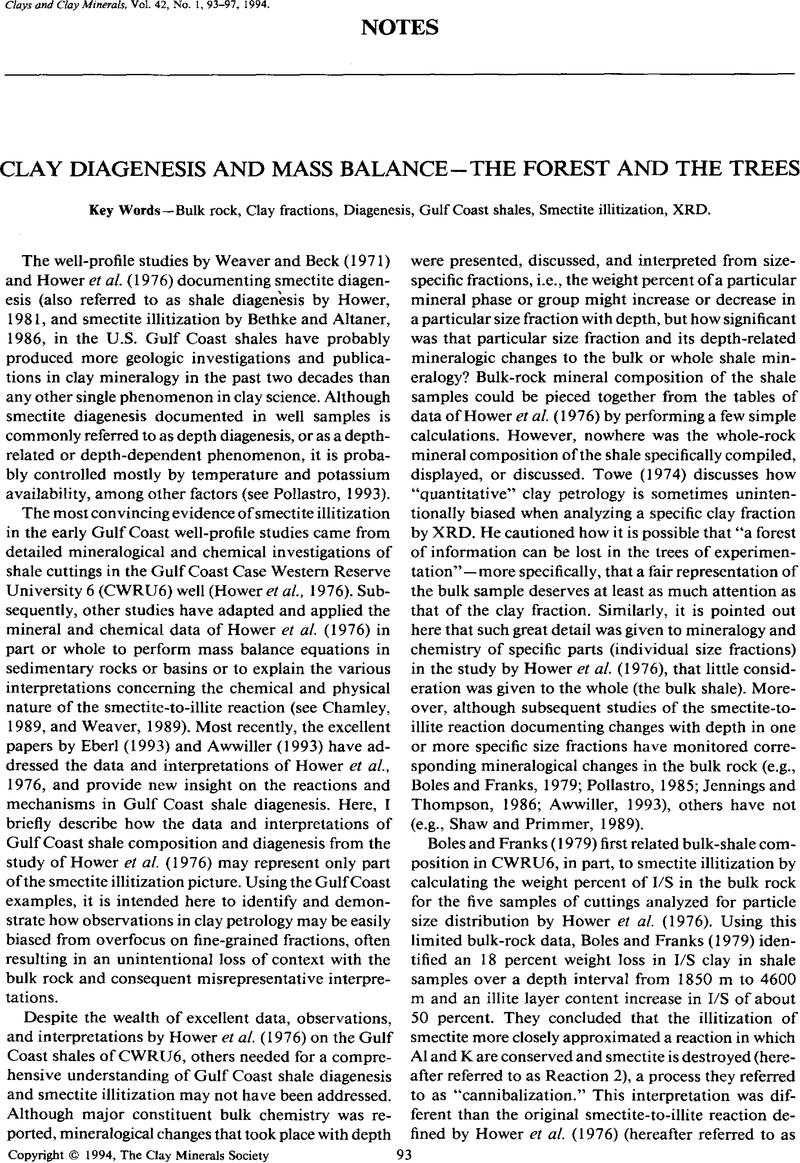Crossref Citations
This article has been cited by the following publications. This list is generated based on data provided by Crossref.
Essene, E. J.
and
Peacor, D. R.
1995.
Clay Mineral Thermometry—A Critical Perspective.
Clays and Clay Minerals,
Vol. 43,
Issue. 5,
p.
540.
Clauer, Norbert
and
Chaudhuri, Sam
1996.
Inter-Basinal Comparison of the Diagenetic Evolution of Illite/Smectite Minerals in Buried Shales on the Basis of K-Ar Systematics.
Clays and Clay Minerals,
Vol. 44,
Issue. 6,
p.
818.
de Caritat, Patrice
Bloch, John
Hutcheon, Ian
Longstaffe, Fred J.
and
Abercrombie, Hugh J.
1997.
Comparison of the Mineralogical and Chemical Composition of 2 Shales from the Western Canada Sedimentary Basin and the United States Gulf Coast.
Clays and Clay Minerals,
Vol. 45,
Issue. 3,
p.
327.
Wilson, M.J.
Shaldybin, M.V.
and
Wilson, L.
2016.
Clay mineralogy and unconventional hydrocarbon shale reservoirs in the USA. I. Occurrence and interpretation of mixed-layer R3 ordered illite/smectite.
Earth-Science Reviews,
Vol. 158,
Issue. ,
p.
31.





